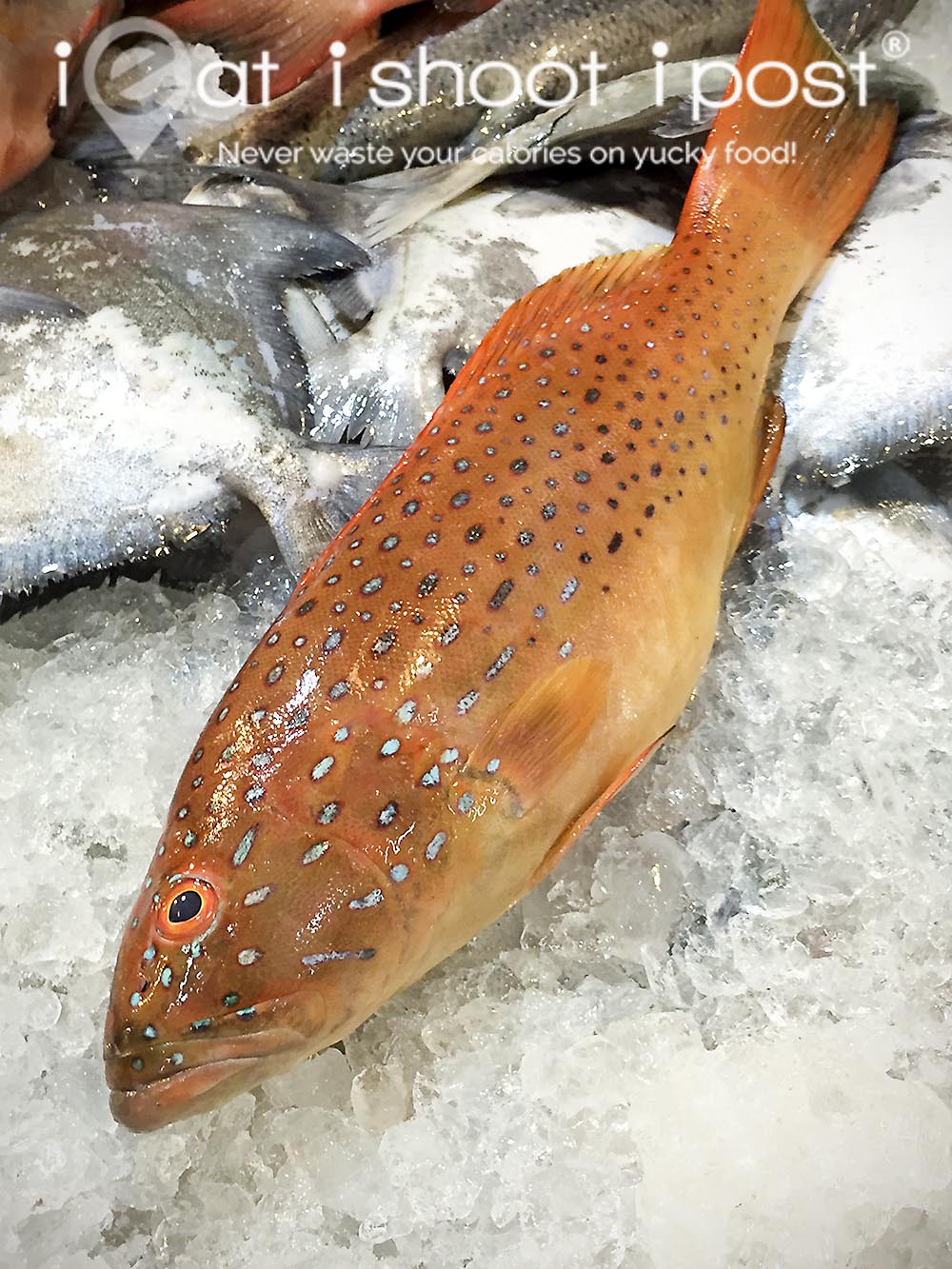
Spotted Coral Grouper/Coral Trout
Plectropomus maculatus (Bloch, 1790)
Mandarin: 石斑魚 (Shí bān yú), 七星斑 (Qī xīng bān), 太星斑 (Tai xīng bān)
Malay: Ikan Kerapu sunoh pisang, Kerapu Bara
Teochew/Hokkien: Ang Gau,
Groupers are highly prized food fish especially at seafood restaurants where they are often seen swimming in tanks. My wallet had its first brush with a live grouper almost 20 years ago when I just graduated from medical school. After I got my first pay-check, I treated my family to a seafood dinner at one of the Cantonese restaurants in Sydney. (We were living there then). The live coral trout I bought was $80 which was a quite significant in those days for an intern! The fact that I still remember the price of the fish goes to show how much pain I felt at the time!
Groupers are excellent eating fish which are found mostly in the tropics. The flesh is tender yet it has a bouncy texture that flakes nicely. I think that may be the reason why they are known as “cod” in Australia. There are a few theories about where the name “Grouper” comes from. Some say that it is because the fish tends to “group” together. Others maintain that it is because the fish gropes around the nooks and crannies in the coral reefs looking for food. It is likely that the name grouper was derived from the Portugese “garoupa” which in turn might have given rise to the Malay name kerapu or was derived from it. No one really knows.
In Singapore, you will frequently find table sized groupers swimming in tanks in live seafood restaurants. The fish is usually steamed in order to fully appreciate its delicate texture. The larger sized Coral Groupers are very popular at fish head steamboat restaurants where you can order either fish head or sliced fish steamboat.
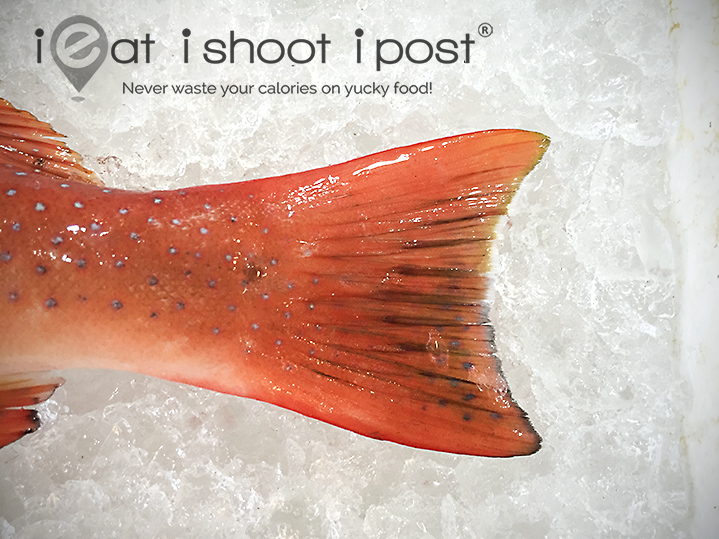
There are generally two types of red groupers seen at the wet market. Differentiating them is academic unless you are a real connoisseur of this fish. (more about this later). Their colours can range from olive green to reddish brown depending on where the fish are caught. The bluish spots on the Coral Trout, plectropomus maculatus are larger and oval in shape. There is also a blue ring around the eye and the tail fin is described as emarginate meaning that it is con caved in shaped but not definitely forked.
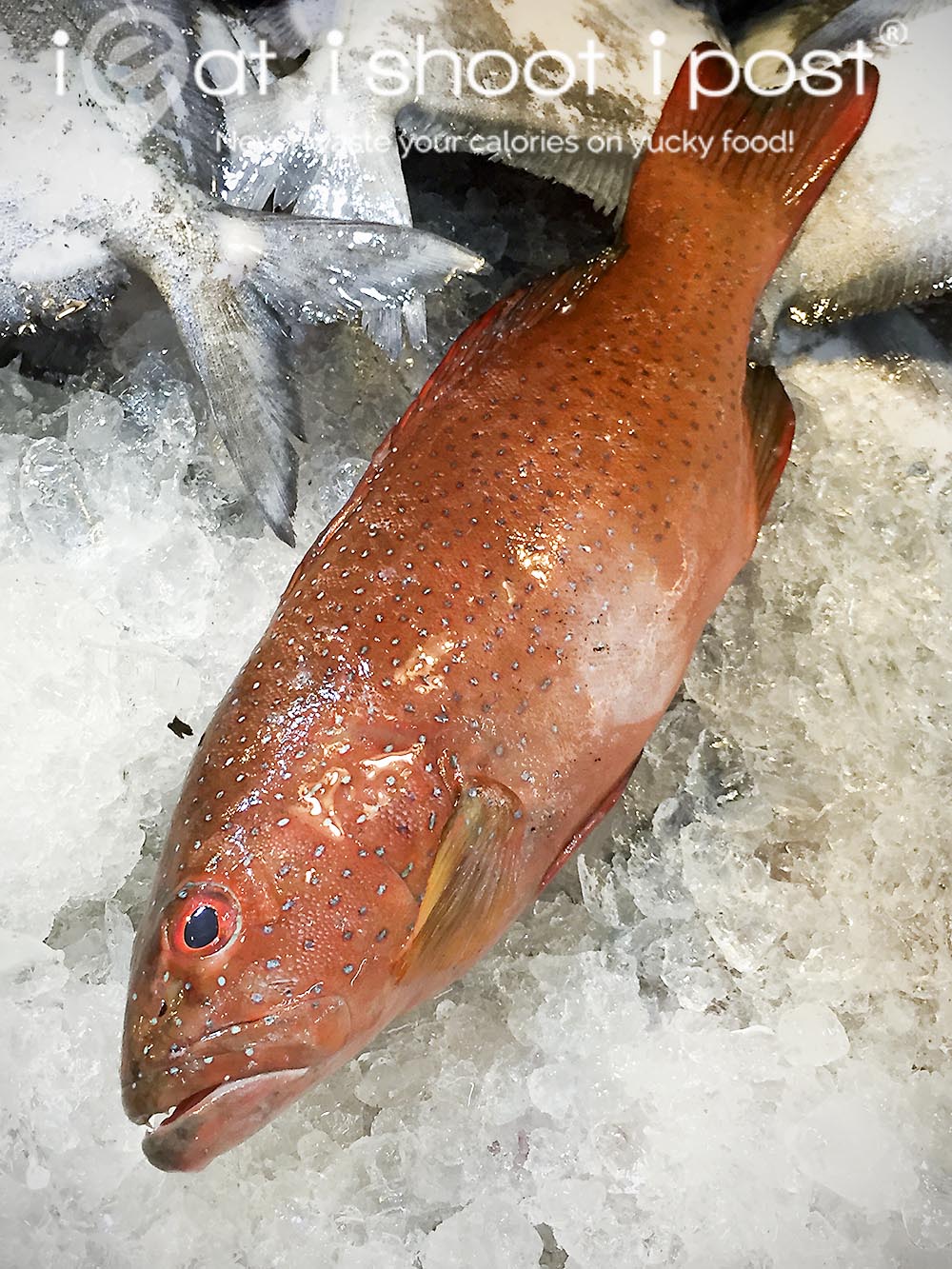
Leopard Coral Grouper
Plectropomus leopardus (Lacepède, 1802)
Mandarin: 石斑魚 (Shí bān yú), 东星斑 (Dōng xīng bān ), 西星斑 (Xi xīng bān)
Malay: Kerapu Sunoh Bara, Kerapu Bintang
Teochew/Hokkien: Ang Gau
The blue spots on the Leopard Coral Grouper are much smaller compared to the Coral trout and tend to be round instead of oval in shape. They resemble stars in the night sky which is why they are known as 星斑 (star grouper) in Cantonese. The pectoral fins are transparent without the blue dots and they similarly have the blue ring around the eyes.
According to Grouper King owner, Johnny Tan, the most prized of these two very similar looking grouper is the 东星斑 which is not commonly found in Singapore. When you place the 东星斑 and the 西星斑 side by side, the spots on the 东星斑 is noticeably smaller and the body is more slender. The 七星斑 can be found in Singapore. The ones from Indonesia tend to be more intensely orange-red while the ones from the local waters are pale orange in colour. The Indonesian 七星斑 is considered a better eating fish than the 西星斑, while its close relative, the 东星斑 is still considered the best. Yes, its confusing but this is how the Hong Kongers grade their Coral Groupers!
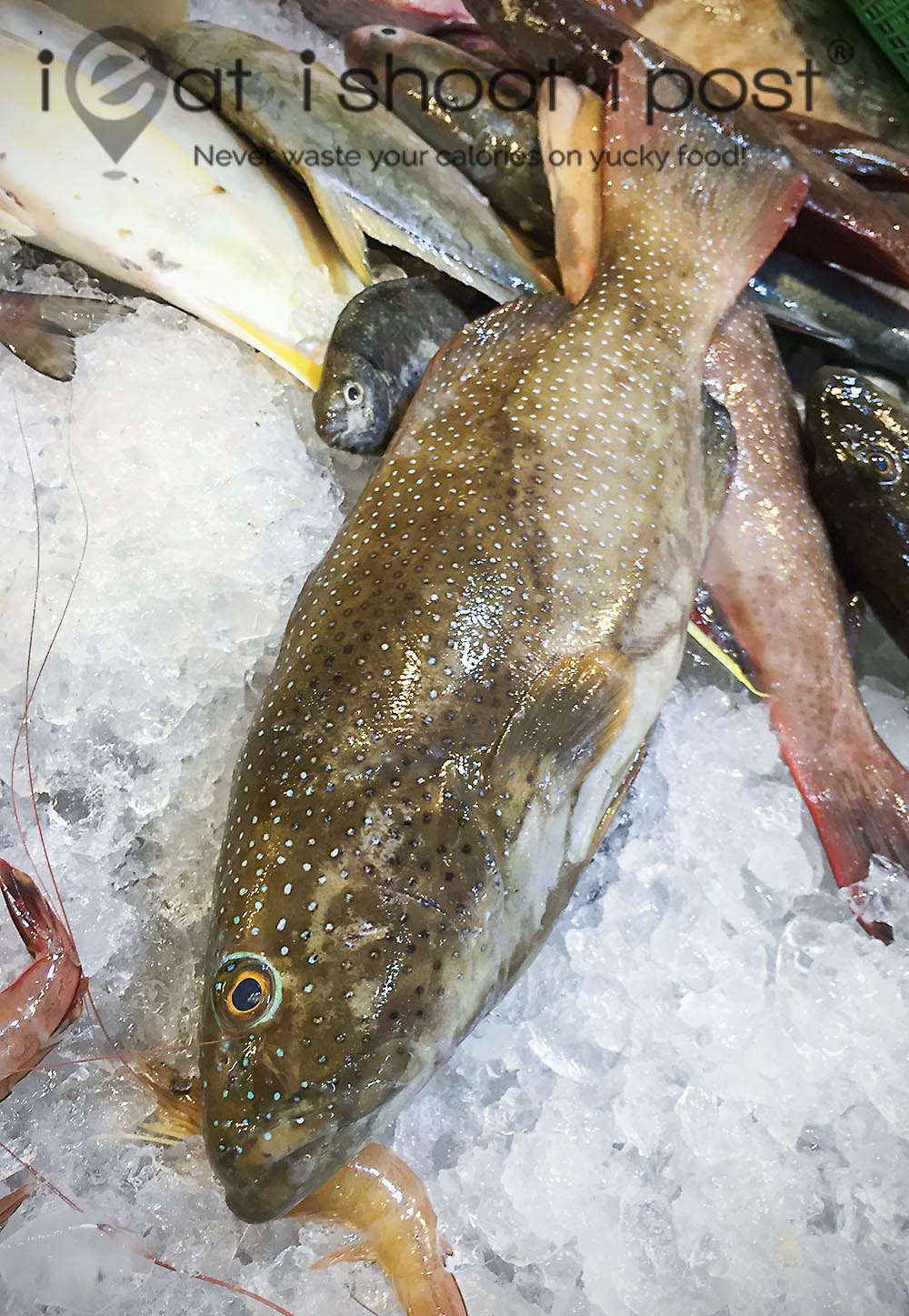
These fish can grow to a length of 120cm but the larger specimens are usually around 70cm at the market. Table sized fish of around 30cm are the most prized and their price can be as much as $42/kg at the market. These are usually steamed and eaten whole. Larger sized fish are usually cheaper and their meat is usually sliced and used for soups and stir fries.
As with any other fish found in Singapore, the best fish are usually caught by fish traps in local waters. The ones caught by net usually have bruises on its skin and are considered inferior quality.
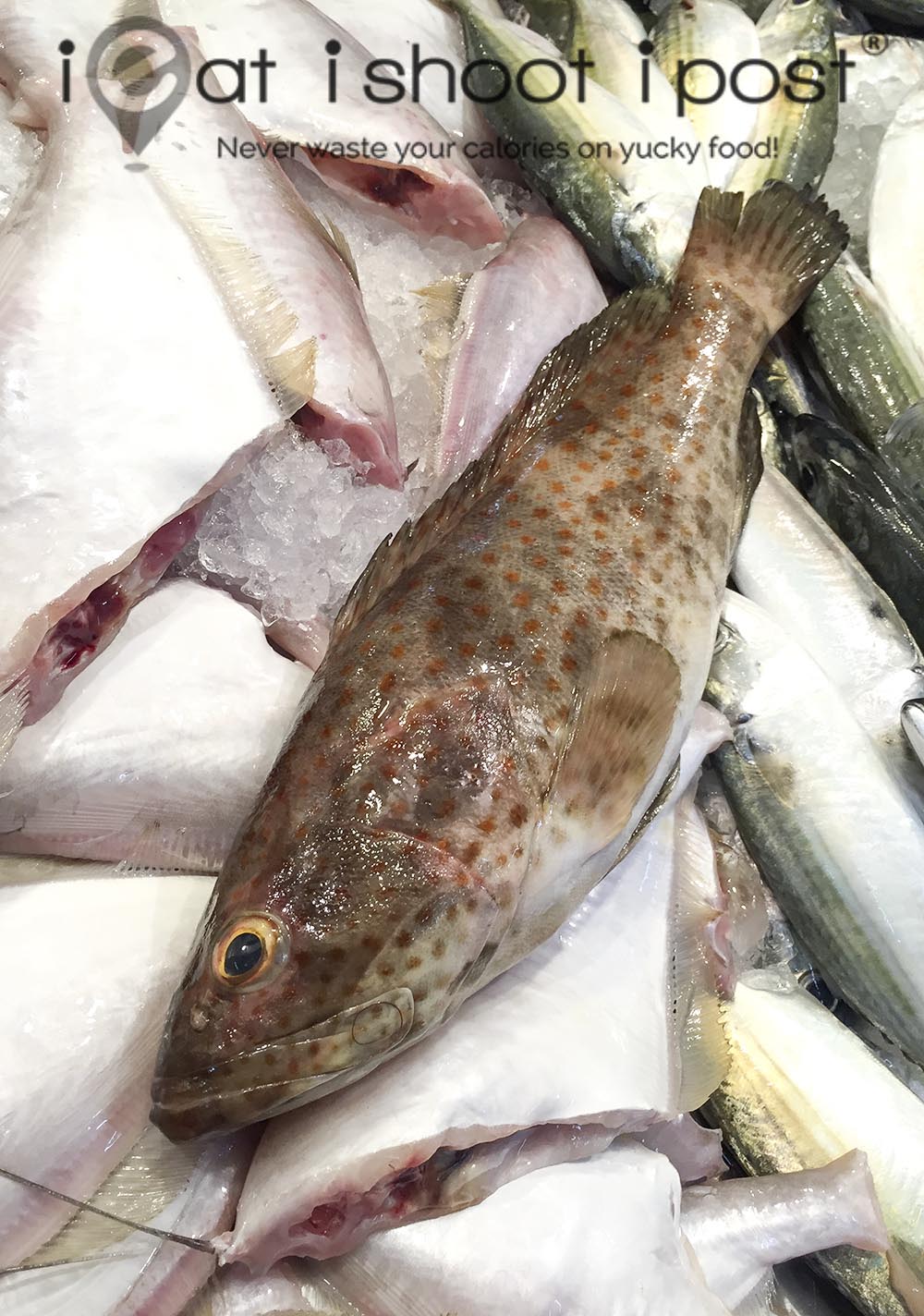
Orange-spotted Grouper, Goldspotted Rockcod, Brownspotted Grouper, Estuary Cod
Epinephelus coioides (Hamilton, 1822)
Mandarin: 石斑魚 (Shí bān yú), 红点石斑 (Hóng diǎn shí bān)
Malay: Ikan Kerapu bintik jingga, Kerapu Pinang, Kerapu Balong, Kerapu Rintek, Kerapu Pakpanang
Teochew/Hokkien: Orh Gau
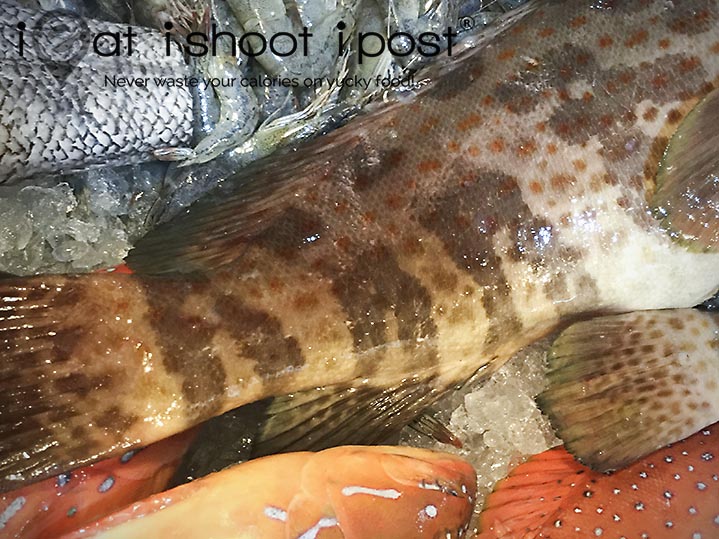
Orange-spotted groupers are best identified by their brownish orange spots on their body and 5 irregularly “H” shaped bars on their body. The cross section of the body is also rounder than the similarly spotted areolate and dusky tail groupers which means that the flesh tends to be thicker. This makes them preferable to the other two groupers. They can grow to a maximum size of 95cm. They should cost around $24/kg at the wet market. The meat of the larger fish tend to be firmer and can be filleted and used for fish soup. With this grouper, the larger fish are preferred.
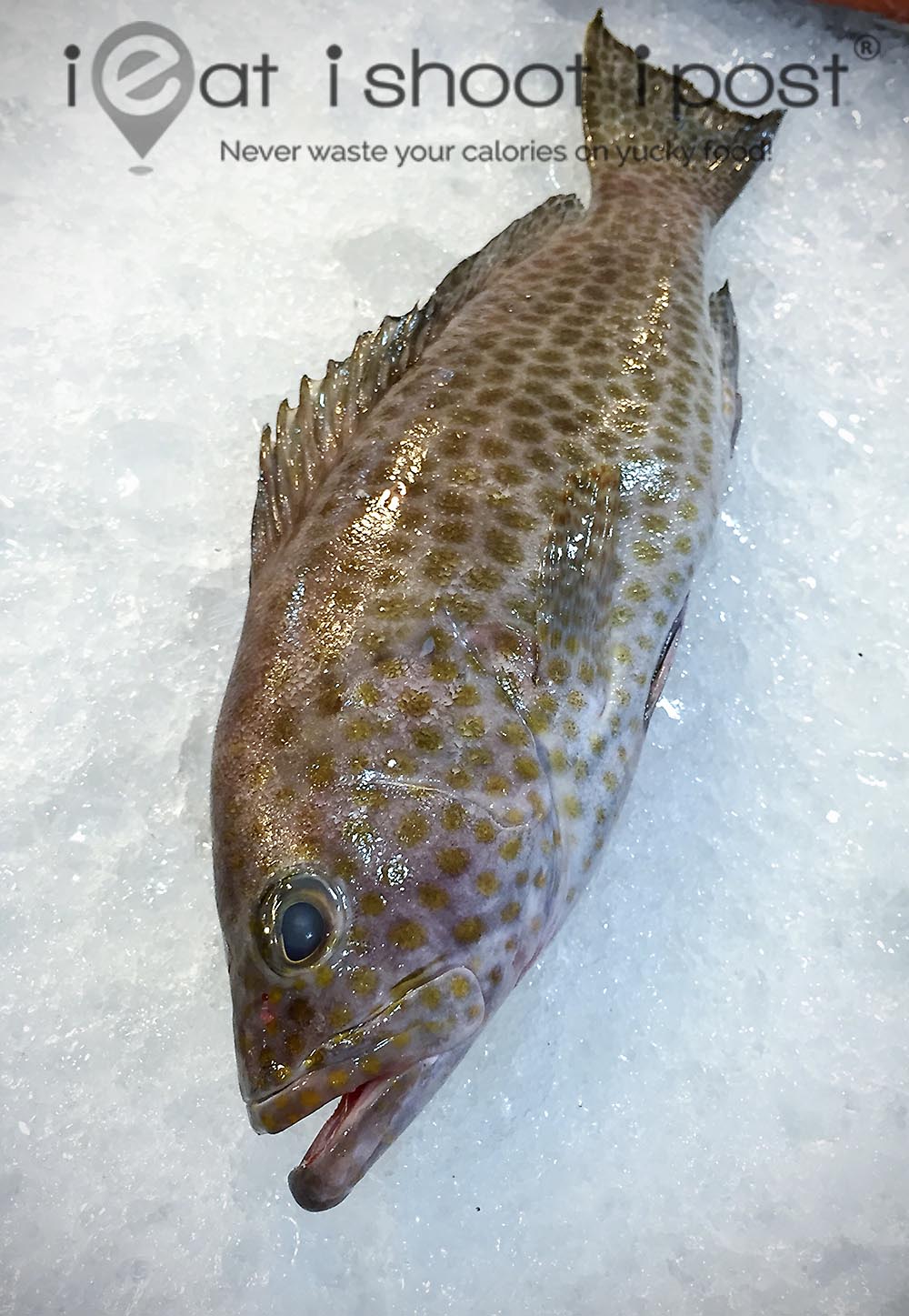
Areolate Grouper
Scientific Name: Epinephelus areolatus (Forsskål, 1775)
Mandarin: 石斑魚 (Shí bān yú),
Malay: Kerapu Ekor Putih, Kerapu Bintik Bulat
Teochew/Hokkien: Huay Gau
Cantonese: Seck Pan
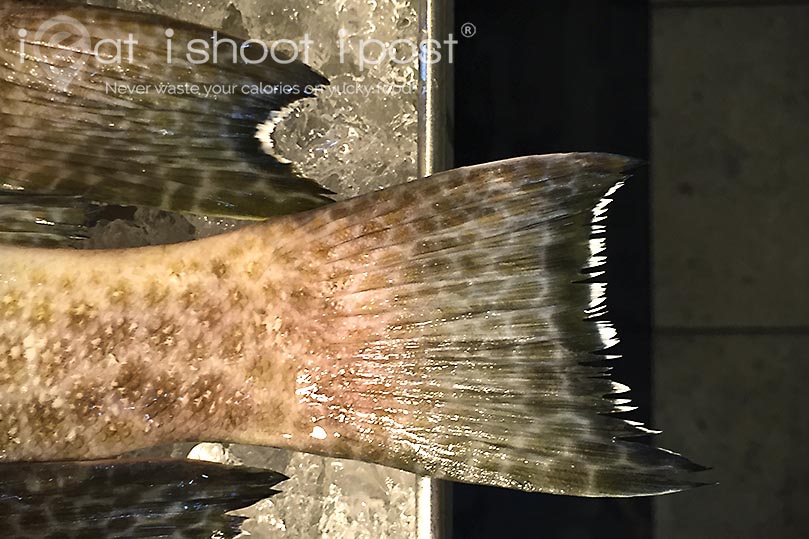
The areolate grouper is quite easy to identify by their characteristic “areolate” pattern on their body which extends from the head to the tail and fins. There is also a characteristic white margin at the edge of the tail fin. They are usually table sized fish that grow only up to 40cm so they are usually steamed whole. As with the other groupers the meat is tender and flakes easily.
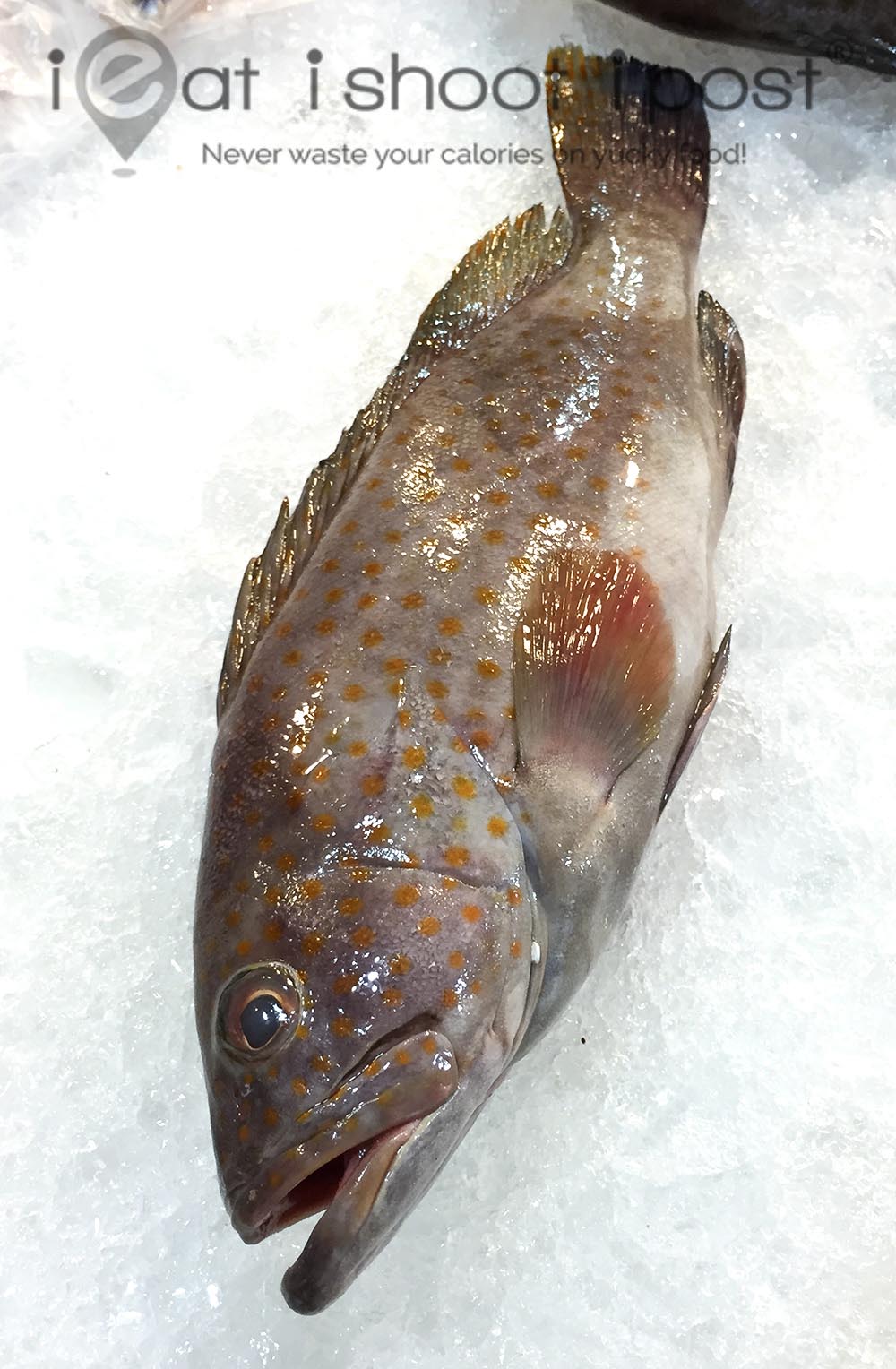
Duskytail Grouper
Epinephelus bleekeri (Vaillant, 1878)
Mandarin: 石斑魚 (Shí bān yú), 红点油班 (Hóng diǎn yóu bān)
Malay: Ikan Kerapu Ekor Gelap
Teochew/Hokkien: Huay Gao
Cantonese: Seck Pan, Hong Kong: Sheung Sik Mei Hung Paan.
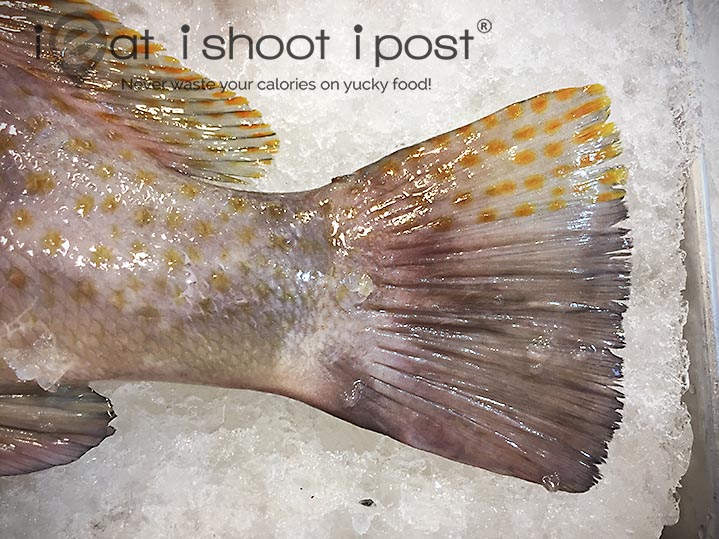
The duskytail grouper can be easily mistaken for the orange spotted grouper because of the similar orange dots on the body of the fish. However, the easiest way to identify this grouper is to look at its tail which only has the orange spots on the upper third while the lower two thirds is a dusky brown colour, hence its name. The orange dots are also found on the dorsal fin and upper third of caudal fin but not the pectoral fins. They can grow to a maximum size of 76cm.
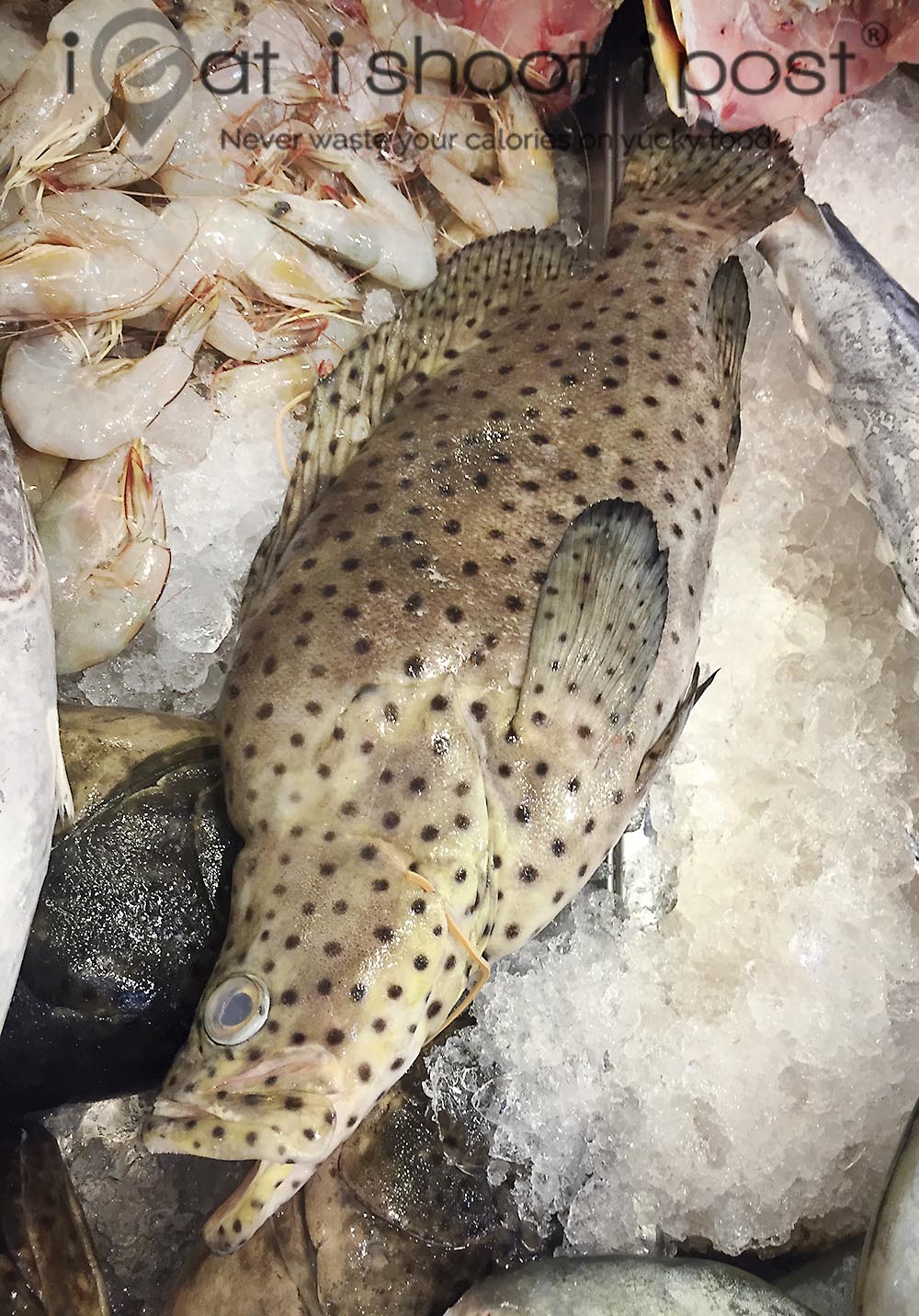
Mouse Grouper/Barramundi Cod/Humpback grouper
Cromileptis altivelis
Malay: Kerapu tikus
Cantonese: Low Shee Ban
Teochew/Hokkien: Ngiau Chee Kau (mouse)
The mouse grouper is considered to be the finest of the groupers. It is a superb eating fish and is highly prized in Hong Kong and is second only to the Soo Mei or Napolean Wrasse. This specimen was seen at Lor Ah Soo market where it was going for $24/kg.
They are very easy to identify. Their small head and hump back appearance resembles the barramundi or Asian Seabass, earning it the name barramundi cod in Australia. The colour ranges from greenish white to light greenish brown with large widely spaced black polka dots all over the body and so they are sometimes also known as Polka dot cod. They can grow up to 70cm but are commonly around 40cm.
In Hong Kong, it is known as the lou shii ban or mouse grouper because of its resemblance to the rodent. I met an old man at the market who told me that in the past, whenever you order lou shii ban in Hong Kong, they would shout your order across the restaurant so that everyone knows you are ordering the fish which could cost SGD $300 even 30 years ago. Then when it is time to pay the bill, a big tip is also expected, or else they will also make sure that the whole restaurant knows that you are really a cheapskate! I have eaten this fish at my favourite steamed fish place, Zai Shun in Jurong East where it is fresh and affordable.
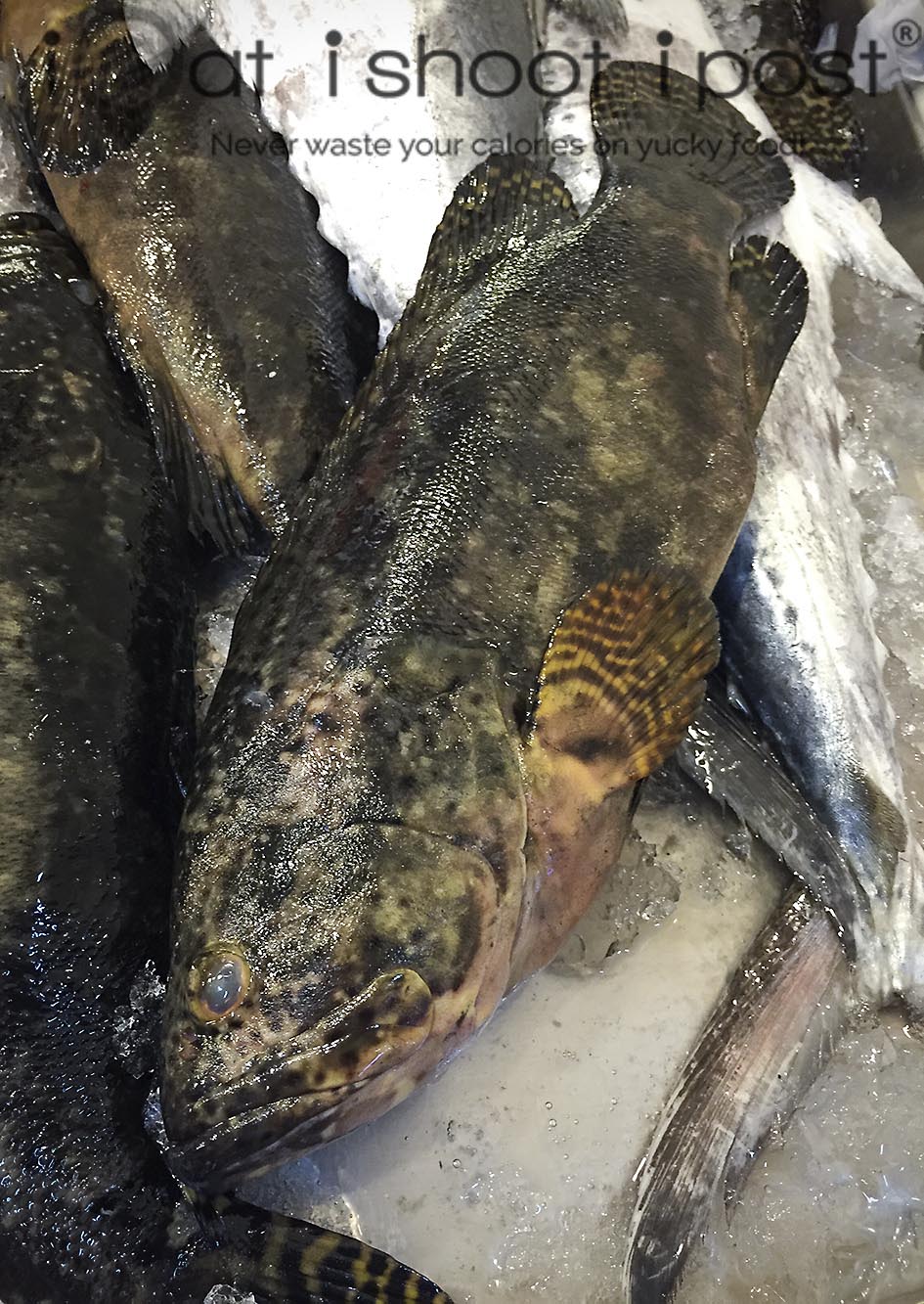
Giant Grouper, Giant Seabass
Epinephelus lanceolatus (Bloch, 1790)
Mandarin: 龙旦 (Lóng dàn)
Malay :Ikan Kertang, Kerapu Pertang
Teochew/Hokkien/Cantonese: Long Dan
These giants can grow to a maximum length of 3m and a weight of 400kg and are unmistakable. However, smaller specimens like the fish in the photo above do sometimes appear at the wet market. Young specimens such as the one above have dark brown backs and light yellow undersides. The body is covered with mottled shades of dark grey to dark brown with white spots and blotches which gets more uniform as the fish grows into adulthood. The defining characteristic of the fish are the numerous small black dots which cover the fins, most predominantly on the pectoral fins, but also the dorsal and tail fins.

There are several restaurants in Singapore specializing in giant groupers. The owner of Grouper King, Johnny Tan was the one who is believed to have started the trend of eating the giants back in the 1990’s. The value of the fish lies in the large amount of collagen found in its skin, head and fins. The throat, stomach and liver are also highly prized. The head of a 270kg grouper can cost as much as $6000 and can feed 80 people! I will be going into more details about the Giant Grouper in my next article.
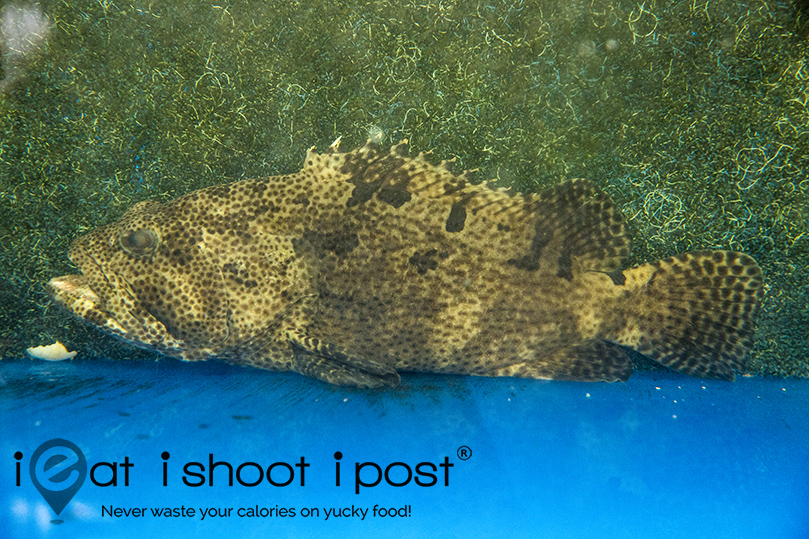
Brown Marbled Grouper
Epinephelus fuscoguttatus
The brown marbled grouper can be fished in our local waters but are not very commonly seen at the wet market. They grow to a maximum length of about 1m but are commonly around 60-70cm. They are brown in colour with darker blotches grouped in about 5 vertical bands. There is a distinctive small black saddle at the base of the tail. All the fins have small brown spots. This fish photo was taken at a live seafood restaurant.
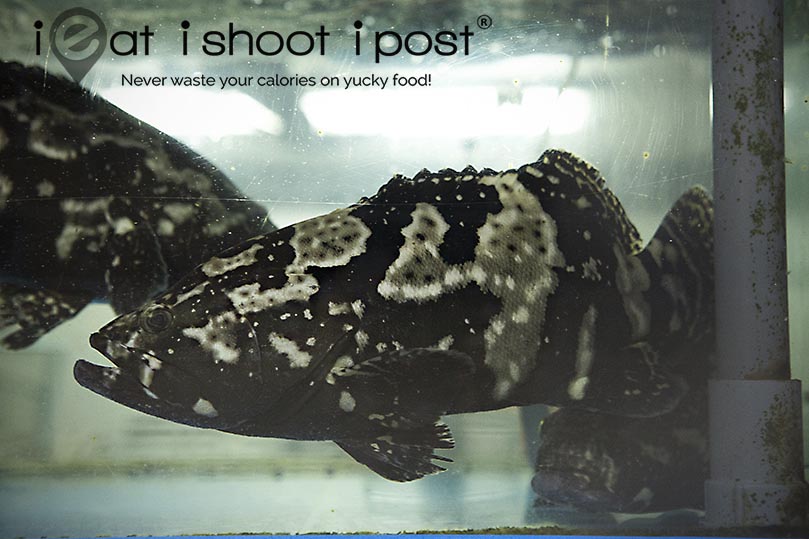
“Dragon Tiger Grouper”
Hybrid
Mandarin: 龙虎班
Because Giant Groupers grow so quickly they are often crossed with other groupers to produce quick growing hybrids such as the Dragon Tiger Grouper in the photo above which is a cross between the Giant Grouper E. lanceolatus and the and Brown Marbled Grouper (E. fuscoguttatus). There are many hybrids that are currently being farmed in Malaysia. So if you spot an unusual grouper swimming in a tank in a seafood restaurant somewhere, it may well be one of these hybrids!
There are literally hundreds of different groupers. The following are the less common ones which occasionally appear on the wet market. They serve as a guide for identification purposes as there is little information about their eating quality that I can find.

Camouflage grouper
Epinephelus polyphekadion
Mandarin: 油斑
Teochew/Hokkian: You Gao

The camouflage grouper can grow up to 61cm. It is brown in colour with dirty white blotches, especially on upper body and numerous small dark brown spots covering head, body and fins. There is a distinct, dark saddle on tail base. It is similar in appearance to the brown marbled grouper. On some specimens, distinct oblique bands may be obvious on the head.
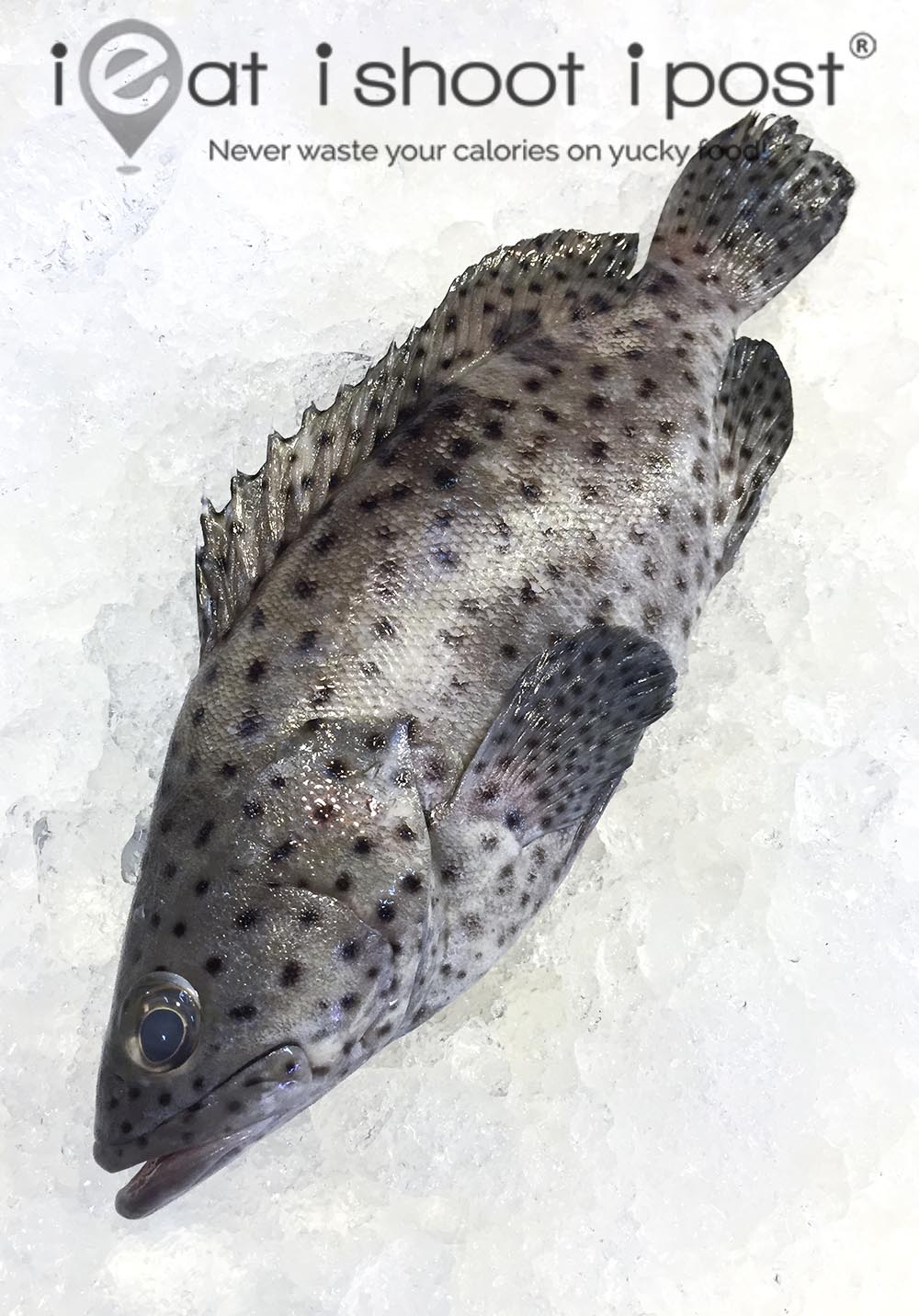
Coral Grouper
Epinephelus corallicola (Valenciennes, 1828)
Mandarin: 石斑魚 (Shí bān yú)
Malay: Ikan Kerapu Karang, Kerapu Pisang
Coral grouper are blotchy dirty white to pale brown in colour with small widely spaced black spots that are smaller than the pupil, on head, body and finds. There is also a dusky to blackish saddle spot on caudal peduncle. They can grow to a maximum size of 49cm. There is no distinct margin on rear dorsal, anal and tail fins.
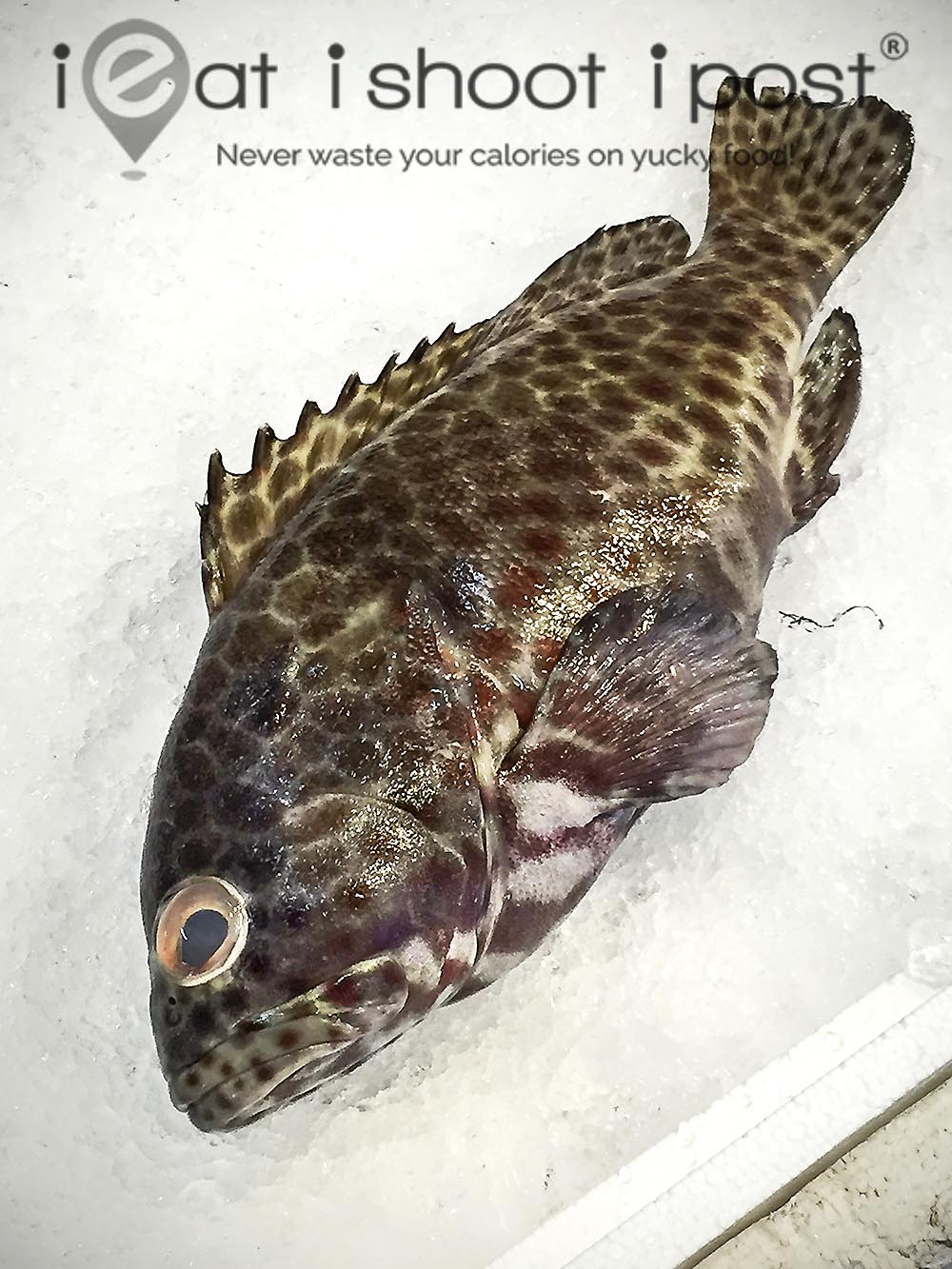
Longfin Grouper
Epinephelus quoyanus (Valenciennes, 1830)
Mandarin 石斑魚 (Shí bān yú), 蜜蜂斑 (Mìfēng bān)
Malay:Ikan Kerapu Cicak, Kerapu Tukul
Teochew/Hokkien: Gao Her
Cantonese: Seck Pan
This grouper is almost entirely covered by large hexagonal patches of dark reddish-brown colour in a honeycomb pattern. There are oblique dark bands just below and slightly in front of pectoral fin base and these are characteristic of this grouper. The fish grows to a maximum of 35cm.
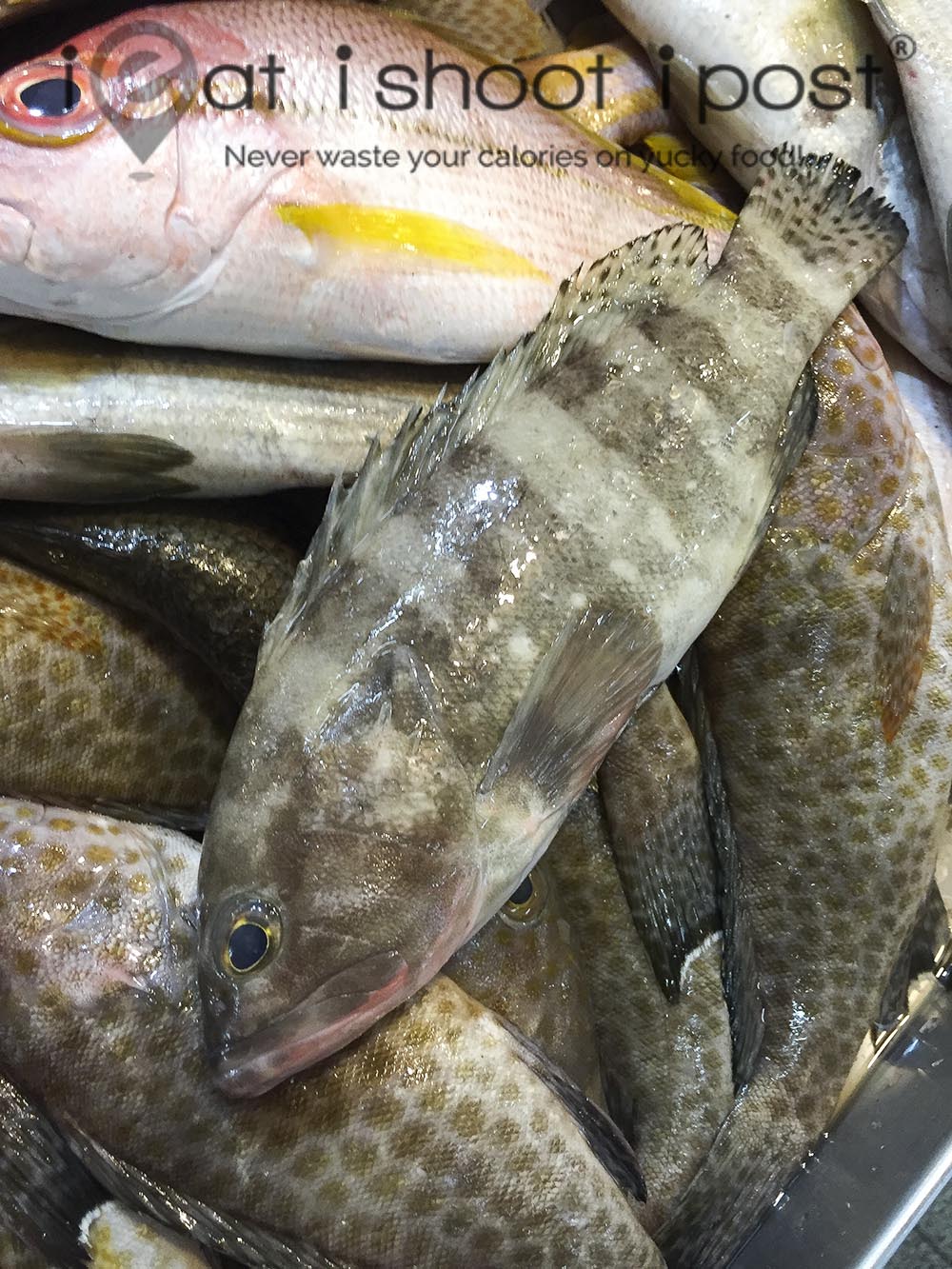
Sixbar grouper/Sixband rockcod
Epinephelus sexfasciatus
Malay: Kerapu bebeh
Hokkien: Koay kau
Cantonese: Seck pan
This is a small grouper that grows to 26cm and distinguished by combination of bars on sides and spotted tail. This specimen was seen at the Lor Ah Soo market at a stall which sells fish caught from a kelong. It is not commonly seen.
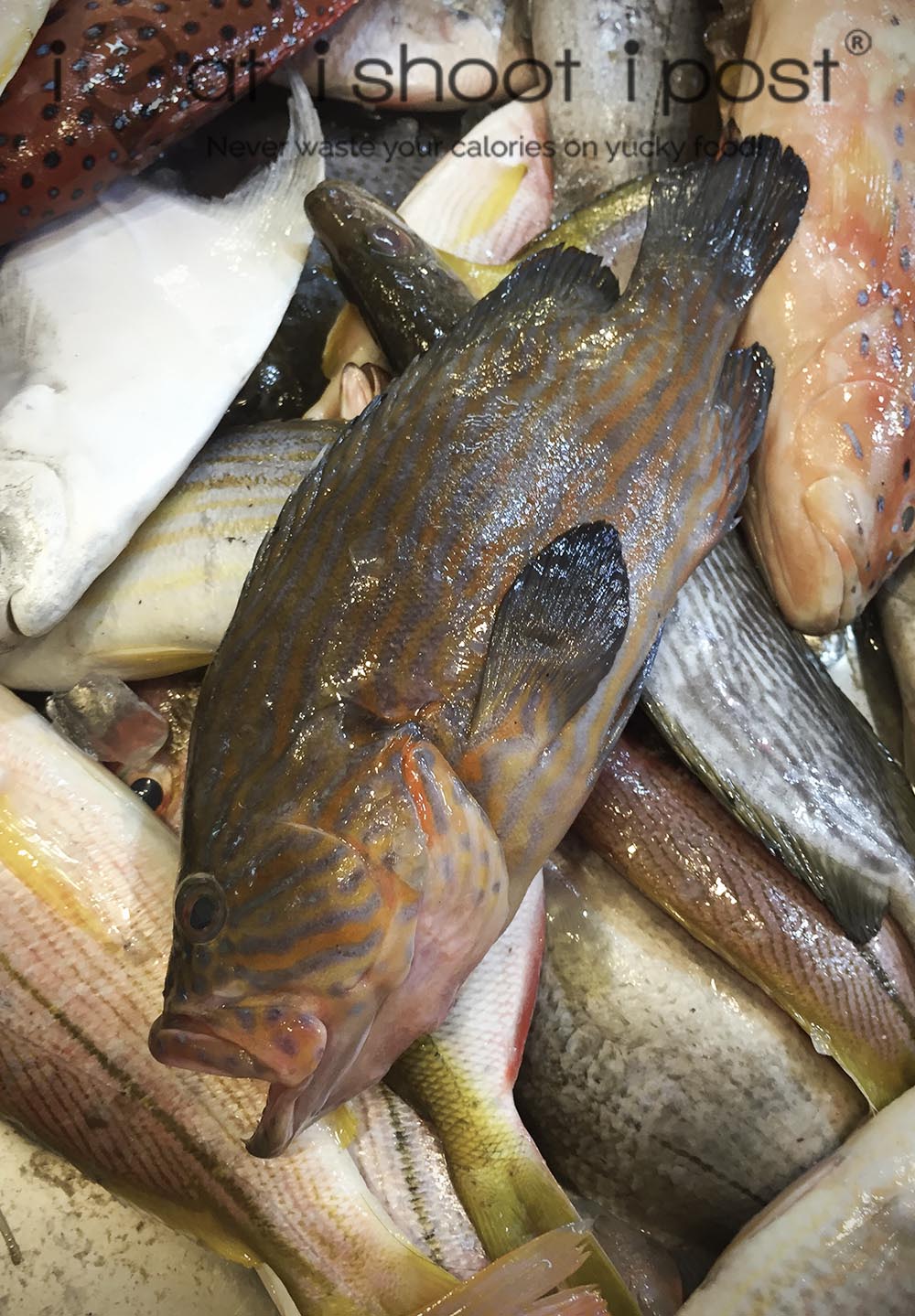
Bluelined Grouper, Bluelined Hind, Bluelined Rockcod
Cephalopholis formosa (Shaw, 1812)
Mandarin: 石斑魚 (Shí bān yú), 蓝线石斑 (Lán xiàn shí bān)
Malay: Ikan Kerapu Garis Biru
Teochew/Hokkien: Gao Her
Cantonese: Seck Pan
These are generally brown or yellowish brown, with dark blue lines on head, body, and fins. Black spot between upper 2 opercular spines. (gill cover) They are small fish which can grow to a maximum length of 34cm.
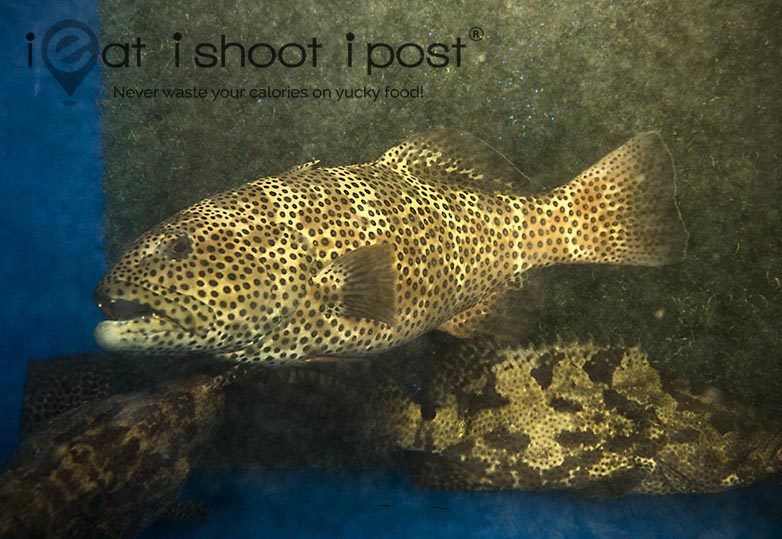
Squaretail Coral Grouper
Plectropomus areolatus
This fish is similar in shape to the Leopard Grouper but not as commonly found in the wet market. The colour is whitish beige to pale gray with numerous blue spots with dark edges on head, body and fins. The tail is straight rather than emaginate as in the Coral grrouper. There are frequently with 4-5 dark blotches forming saddles on back. This photo was taken at a live seafood restaurant and is a fish that has been caught in local waters.
References:
1. Seafood of South East Asia, Alan Davidson 2nd Ed (2003)
2. http://www.talkaboutfish.com/
3. Field Guide to Marine Fishes of Tropical Australia and SEA. 4th Ed. Gerald R Allen, 2009
4. Reef Fish Identification, Tropical Pacific, Gerald Allen, Roger Steene, Paul Humann, Ned Deloach, New World Publications, Inc 2003



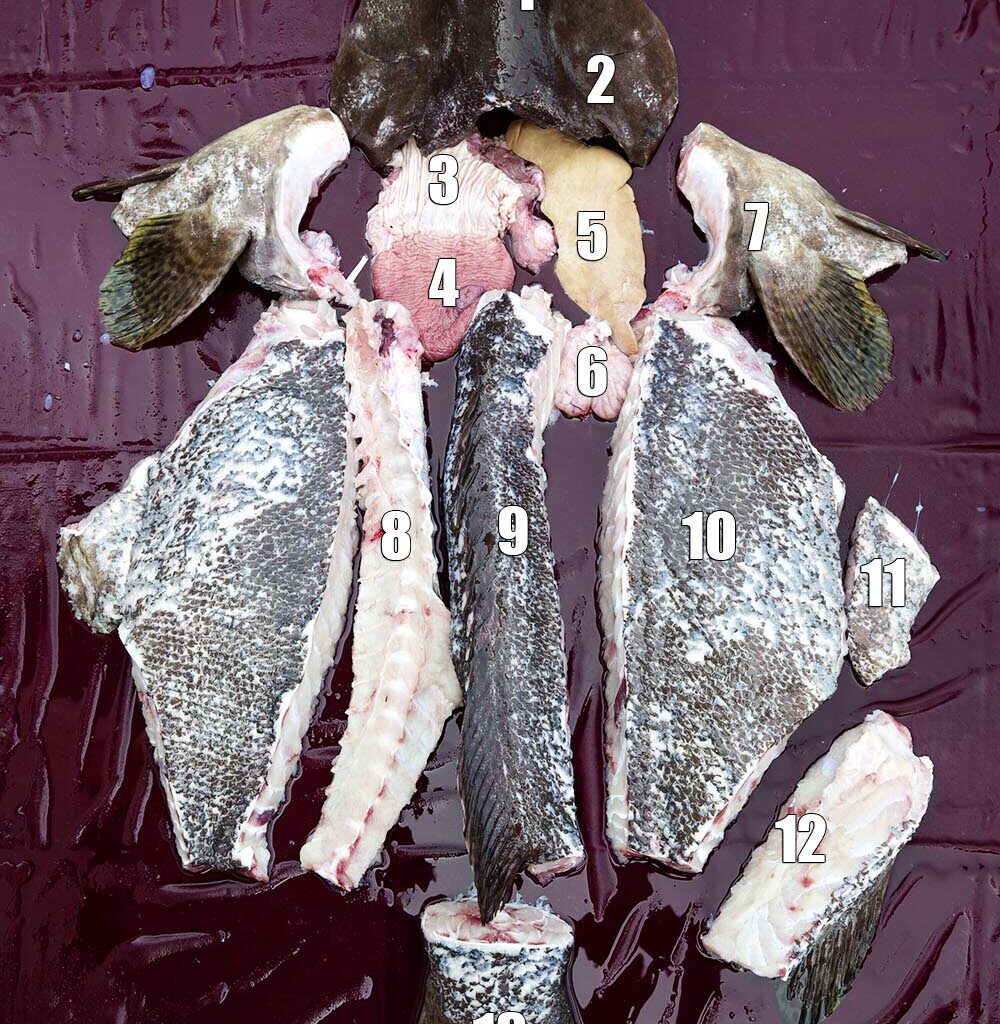

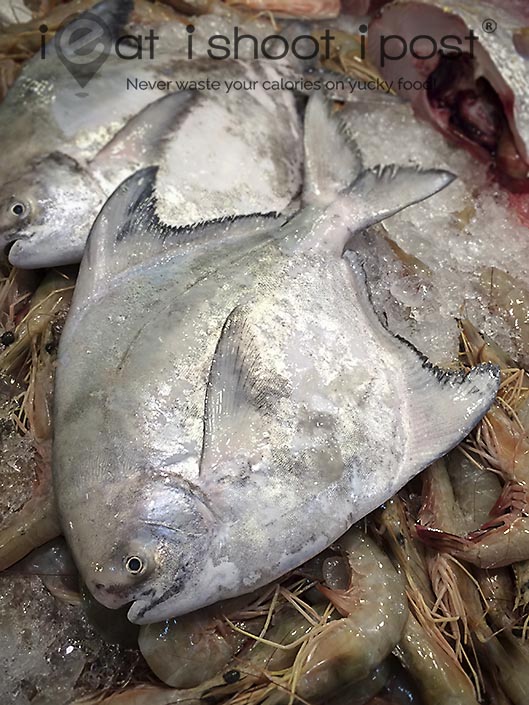
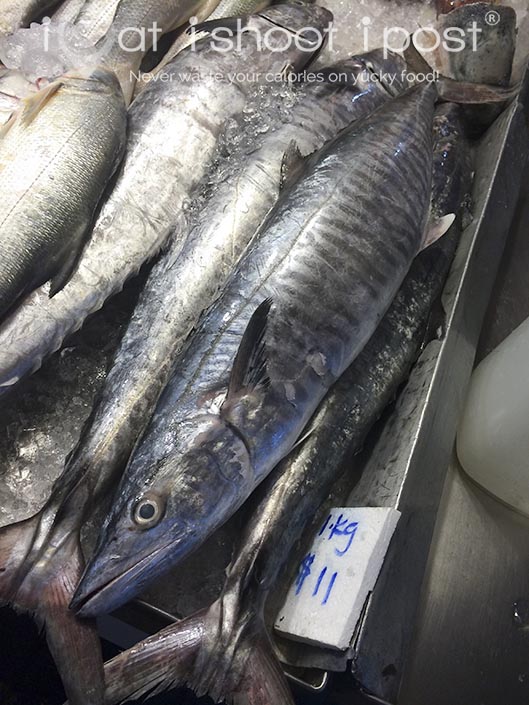
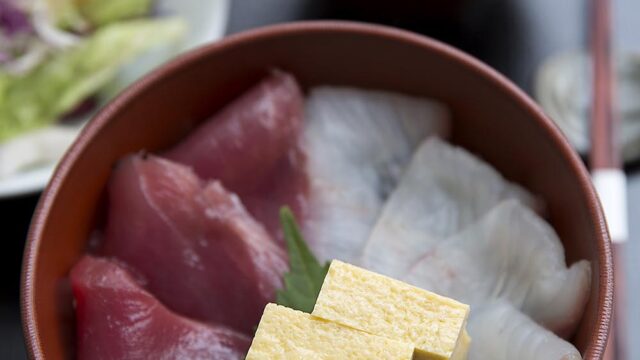




Wow that is great info! Thanks for sharing!
Hi, interesting article. Tried to use it to identify the grouper we caught. Still not very sure. Someone told us it is tiger grouper.
It might be a Orange-spotted Grouper,
Epinephelus coioides (Hamilton, 1822) judging form the H shaped bars at the tail end. Could be a hybrid which was released to the wild.
Oh i see. Ok, thanks. It was quite a challenge cooking that fish.
Very good information. HK right now prefer wild caught grouper than raised one. Maybe the taste better. Napoleon wrasse starting include in appendix 2 on CITIes. Where i found fish fresh or live distributor in singapore? I like to try to supply many varian of seafood. Thank you
Thanks so much for documenting all these. It must be really painstaking effort. I was lost in the sea of names when trying to buy fish from the wet markets and supermarkets. Now I finally know what they are called in dialect and English and how to cook them!
Please recommend more fishy recipes!
You are most welcome!
Thanks Dr Leslie for this extensive resource! If only I’ve come across this page years ago, i would have saved myself much headaches from always buying the wrong grouper. The leopard coral grouper tastes so much better than the spotted coral grouper! But both are called ang gau in the local terms. Thanks to your page, I can now discern between the two. No more spotted coral grouper for me!
Also, just bought a mouse grouper today at lor ah soo market. Seems the price went up a bit. It now costs $45/kg. I bought it from stall 5. He mentioned it was sea caught. BTW, as i was searching on the net for more info on groupers, I came across this page which talks about groupers and even has a ranking system on the red groupers. Seems pretty good, unfortunately its entirely in chinese which I have trouble reading. I just thought of sharing, you might enjoy it : https://sites.google.com/site/mingwceats/grouper
Thanks once again Dr!
Hi Dalen, glad you found the resource useful! Thanks for writing to let me know!
So, Both Leopard Coral Grouper and Areolate Grouper both called “xi xing ban”?
Ah, thanks for picking that one out! Should be the Leopard Coral Grouper that is the xi xing ban. That is the fish that the HongKongers all go for.
There is a type of fish which the Hokkien people call “Kalak”. What is its English and Malay names?
Goldbanded Jobfish, or Ang Goli as it is known locally. Malay: Kerisi Bali